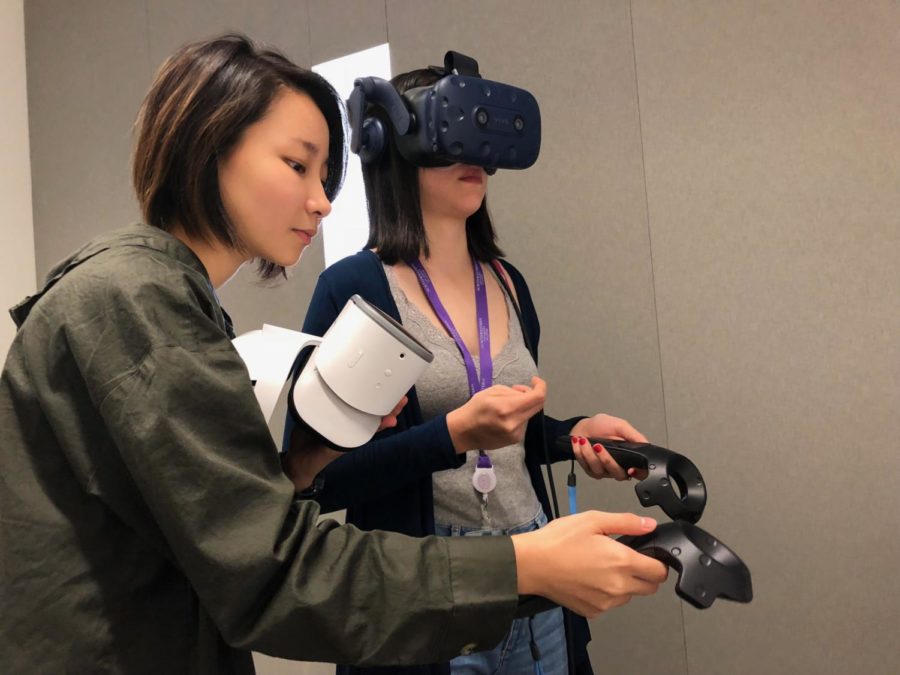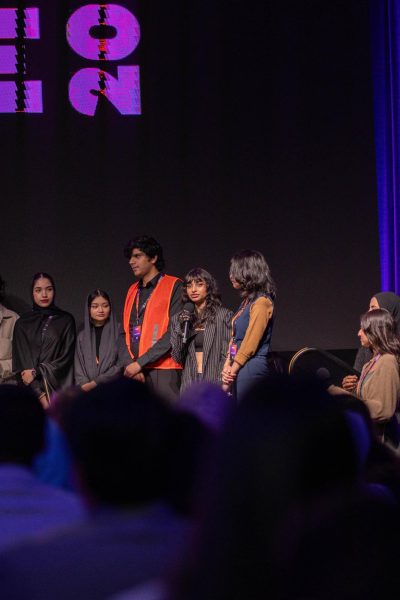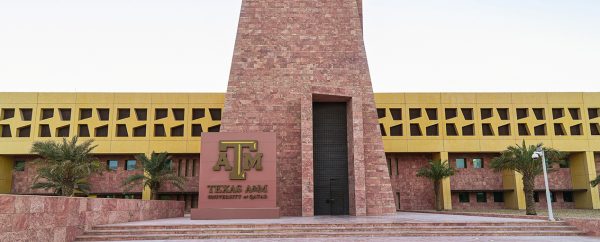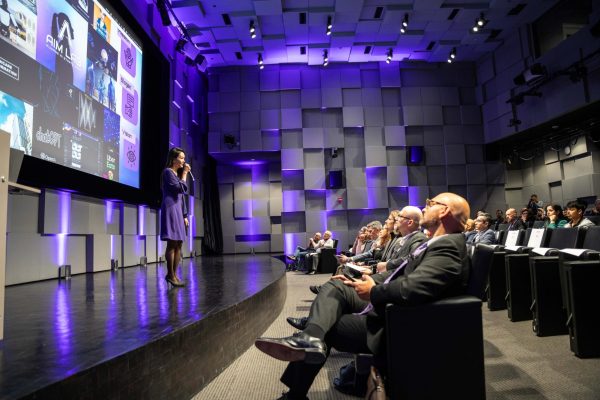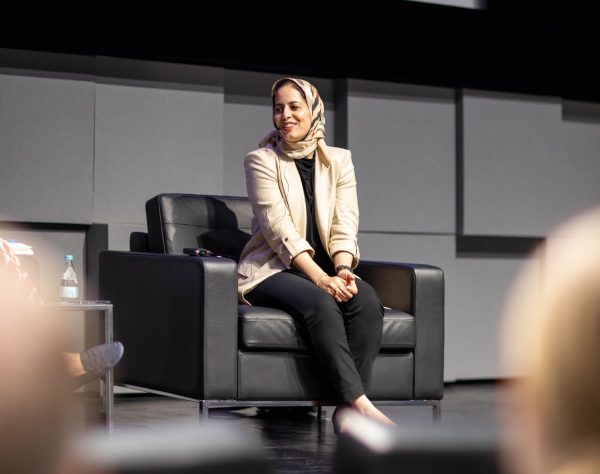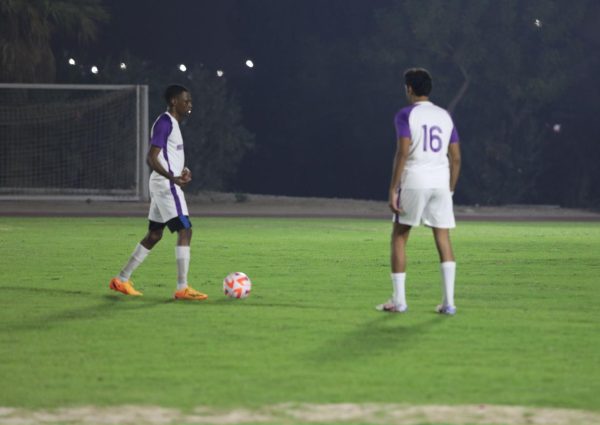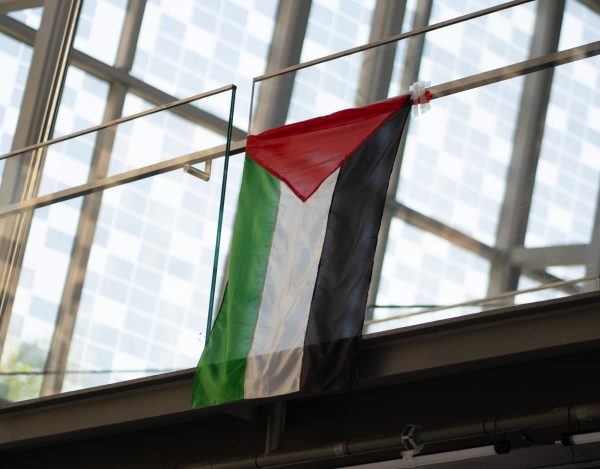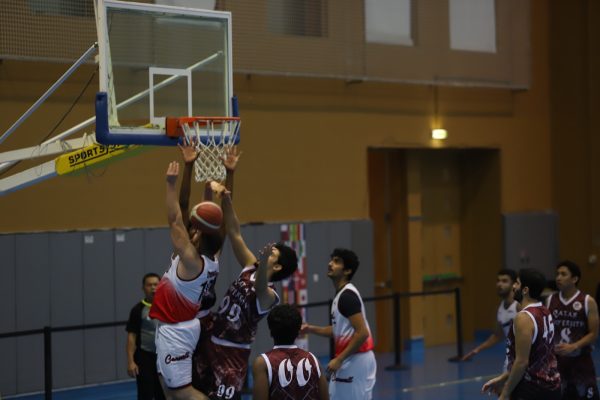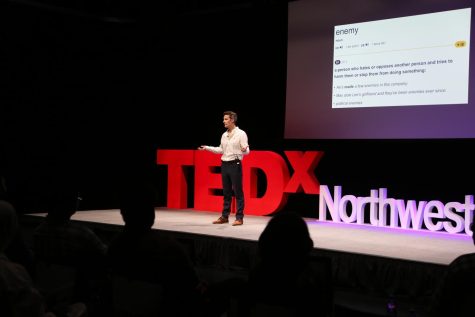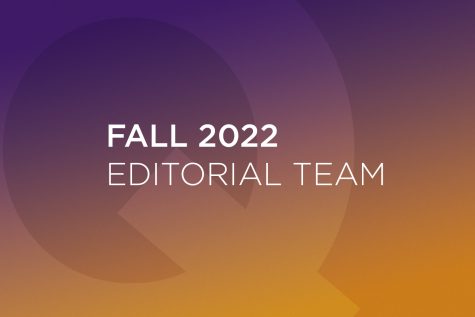NU-Q Opens Media Innovation Lab
Students using the HTC Vive, which operates with two infra-red cameras that will map out a safe zone so students can move safely in their virtual realities. Photo by Ayah Awrtani.
The Media Innovation Lab, a space for NU-Q students to experiment with the latest media technology, officially opened to the public Sunday, Sept. 9.
The MIL is “a space where students, faculty and staff can experiment with and learn from different technologies at Northwestern,” said Nadeen Said, the broadcast and production technical support specialistat NU-Q and a member of the faculty- and staff-composed Working Group on Innovation and Futures Lab committee, which proposed the lab space.

The purpose of the lab is to allow NU-Q students to graduate with “the ability to keep on with the technology growth… and learn skills that will give them a technological advantage among other students and graduates worldwide,” said Said.
The MIL will center on a new theme each year; this year’s theme is augmented and virtual reality for storytelling. While augmented reality allows a computer-generated image to superimpose the user’s vision through a digital screen, virtual reality is the use of three-dimensional technology to provide the user with a more physically-involved experience.
To enhance this year’s theme, the lab includes specialized equipment, such as the Google DayDream VR headset, the Oculus Go headset, and the HTC Vive headset.
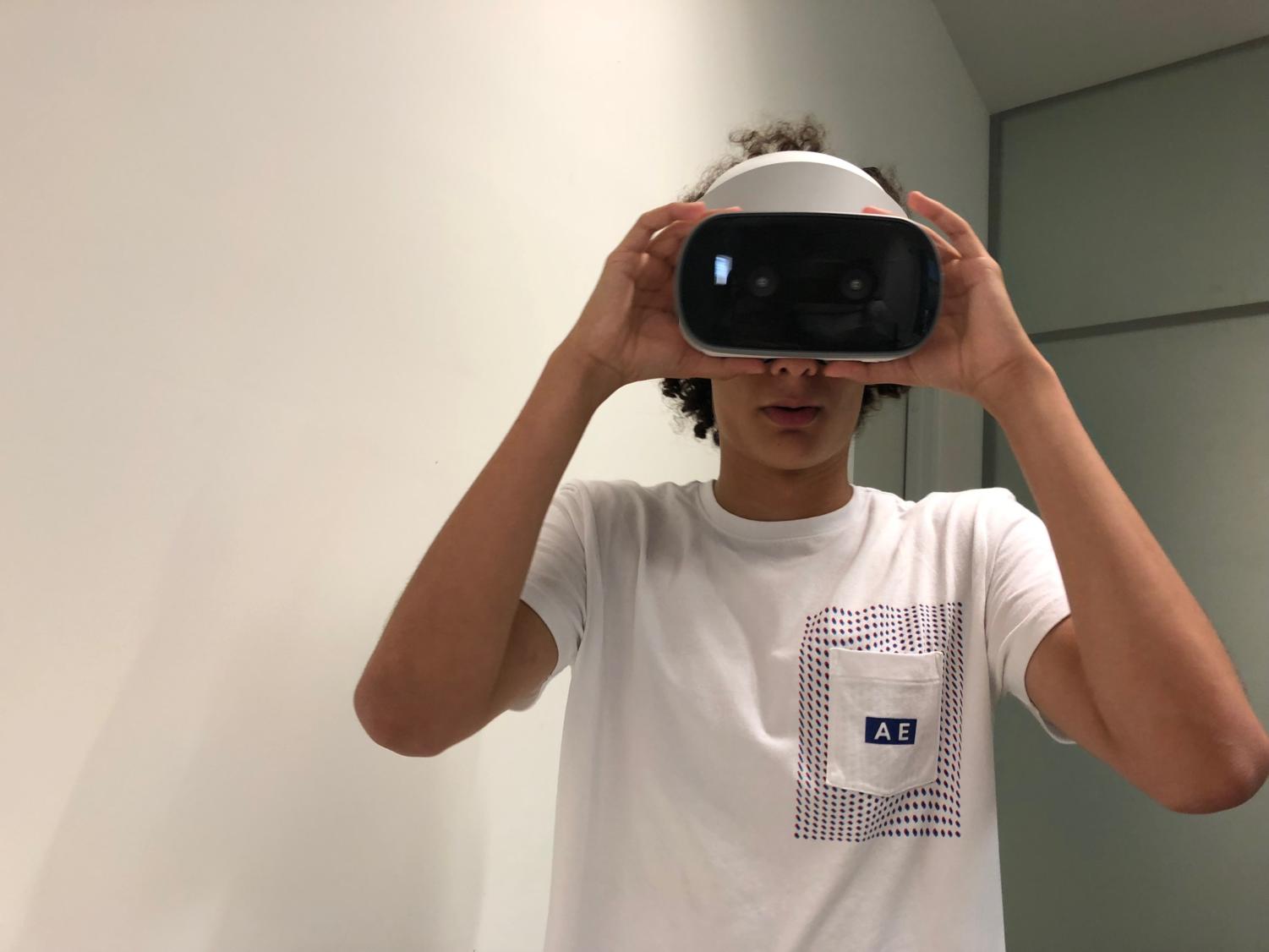
The DayDream will be used “as a beginner experience for people to play interactive games and get used to the headsets,” clarified Said, and the Oculus Go is “a watching station for students to be able to watch 360-degree video content created by NU-Q students.”
Said added that virtual reality experts might visit NU-Q throughout the year to offer sessions and workshops.
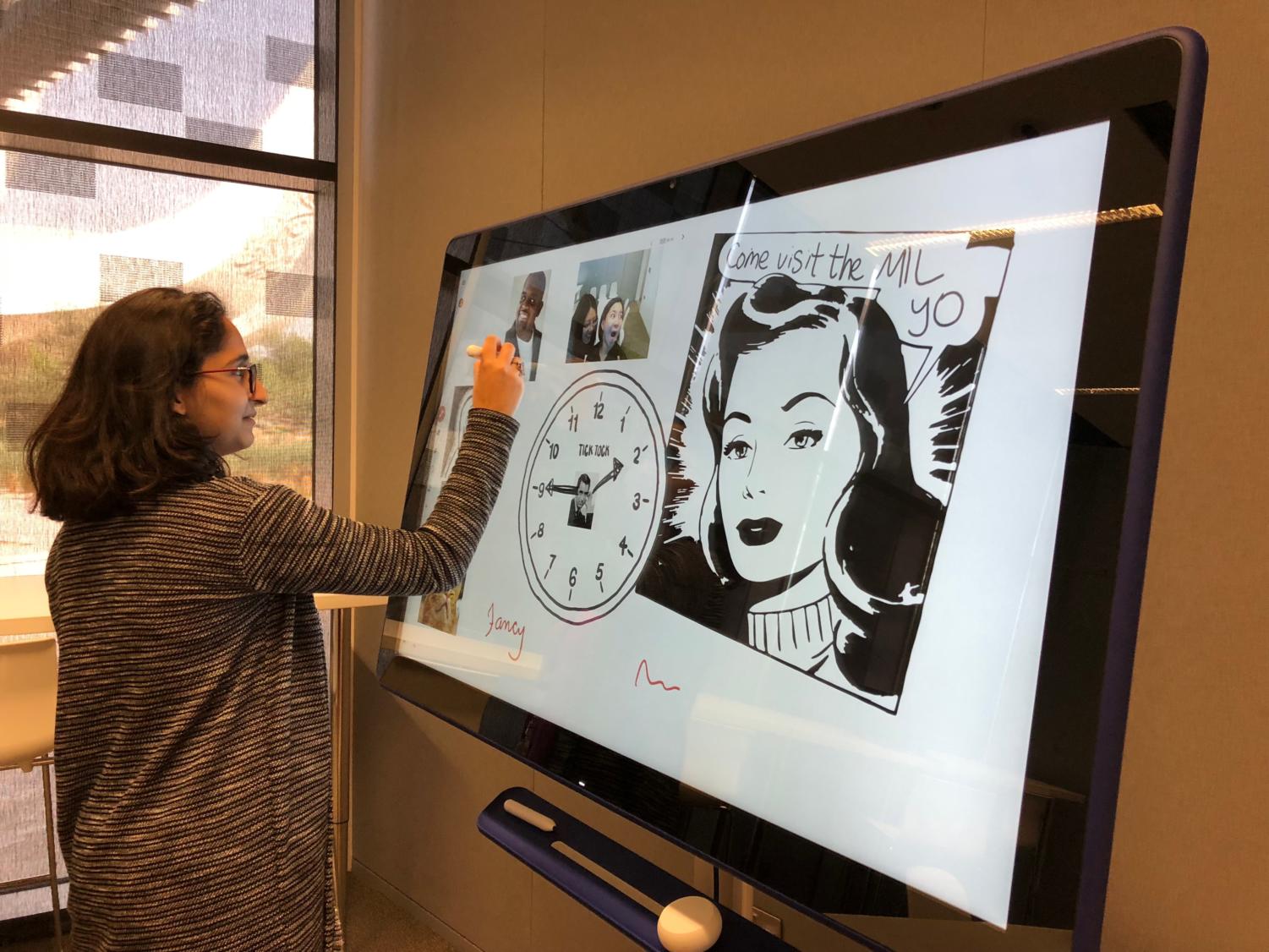
The MIL space is divided into a lab area, where the three headsets can be used, and a workshop area. The latter space includes a Google drawing board that will be used by students, faculty and staff to hold meetings with individuals not physically present; visiting specialists will conduct workshops in that section as well.
Students showed great interest during the opening of the MIL. Journalism sophomore Shafaq Zia said the lab will encourage NU-Q students to learn a new skill, adding that it also “will encourage others to view journalism with a broader perspective than that of pure writing.”
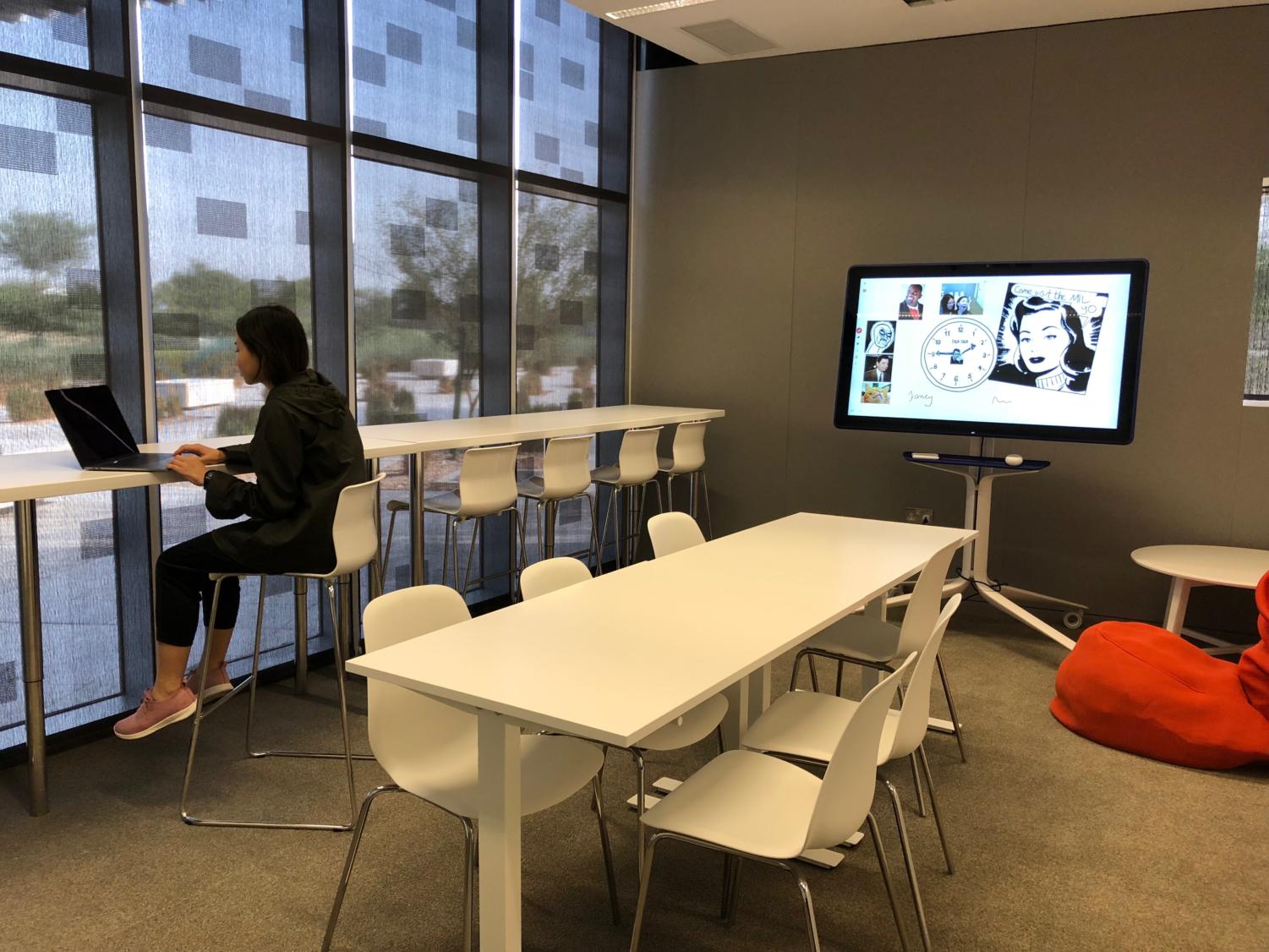
Communication junior Wijdan Alkhateeb was also impressed. She had experienced virtual reality previously on a university-sponsored trip to New York. “It is amazing to see it back here in Doha,” she said.
While the final location for this project was difficult to secure, and the chosen theme for this year was long debated, Said expressed her excitement to see the MIL grow into a valuable entity for both students and faculty.



